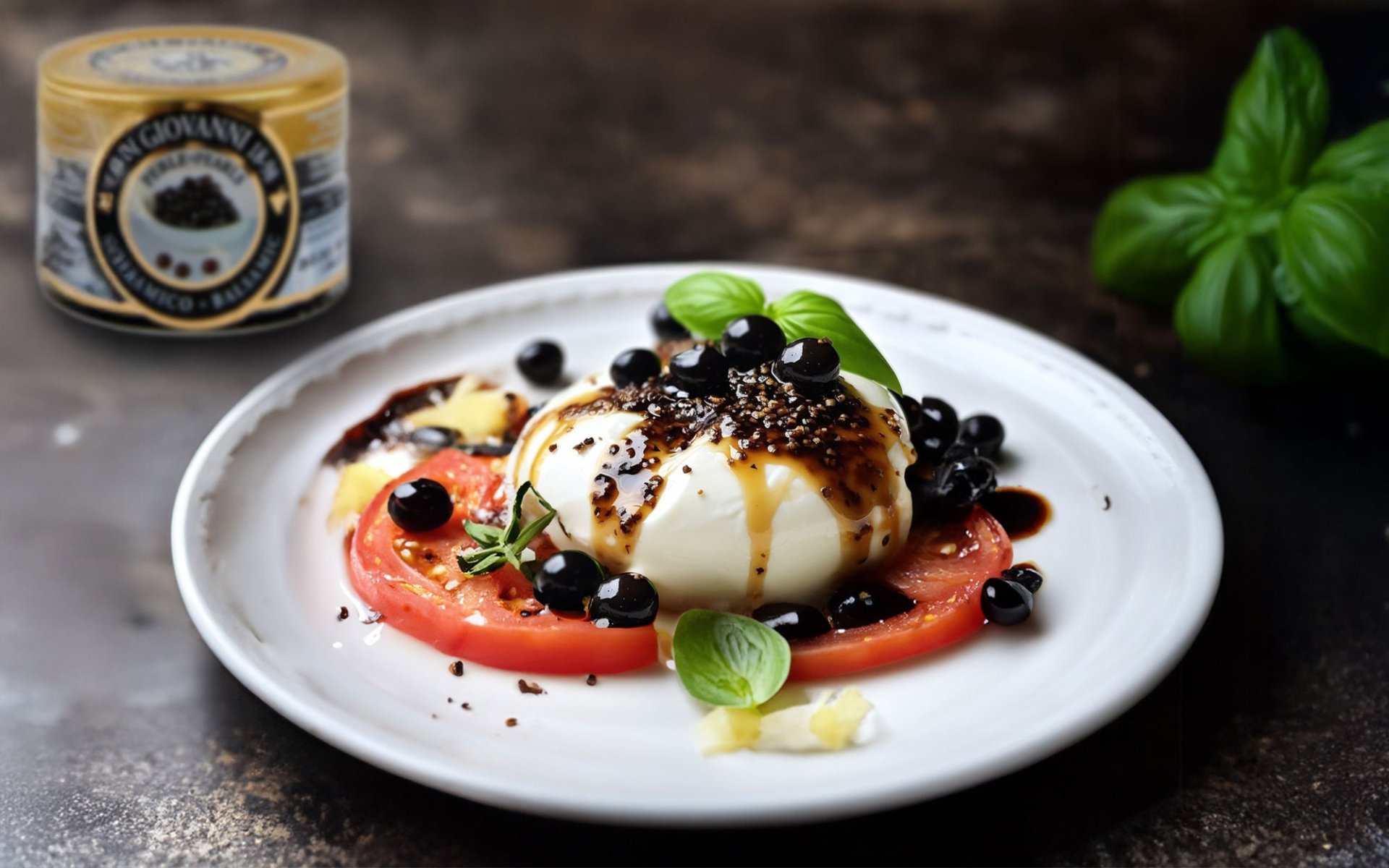Balsamic Pearls

Balsamic Pearls are one of the exquisite creations from Molecular Gastronomy techniques, where chefs have transformed balsamic vinegar into tiny pearls. When bitten, the sweet and tangy flavor of balsamic vinegar bursts forth. This is achieved by perfectly blending scientific techniques with the art of cooking, leading to an elevated dining experience that is both beautiful and innovative.
Balsamic Vinegar: Origin and Special Qualities
Balsamic Vinegar is an ingredient that chefs worldwide have favored in cooking for centuries. Originating from Modena, Italy, this vinegar is made from red grapes and aged in oak barrels for many years. It typically has a dark brown or black color and is renowned for its unique sweet and sour, mellow taste with a distinctive oak aroma, differing from other vinegars that are typically sharp and pungent. For these reasons, chefs around the world often use balsamic vinegar in their culinary creations.
However, even though traditional balsamic vinegar was already a popular ingredient for chefs globally, modern technology has taken balsamic vinegar to the next level by creating it in pearl form, known as Balsamic Pearls.
Balsamic Pearls: The Result of Spherification Technique
The creation of Balsamic Pearls stems from the creative culinary thinking of modern chefs who apply scientific techniques to the art of cooking. This technique was inspired by Ferran Adrià of the world-renowned El Bulli restaurant, who developed this method called Spherification or Faux Caviar.
The process of making Balsamic Pearls involves encapsulating balsamic vinegar within a delicate membrane. This is done by adding sodium alginate powder (a food additive derived from seaweed, similar to agar-agar and gelatin) to balsamic vinegar. This mixture is then dropped using a syringe or dropper into water mixed with calcium chloride. When sodium alginate combines with calcium, it gradually forms a gel from the outside in, becoming small, spherical beads resembling pearls.
In the creation of Balsamic Pearls, neither sodium alginate nor calcium alters the flavor of the ingredients. Therefore, balsamic vinegar transformed into Balsamic Pearls retains its concentrated, traditional taste. This method not only makes food more appealing but also prevents the liquid balsamic vinegar from mixing with other ingredients on the plate. Instead, when scooped and bitten, it melts in the mouth, delivering a full burst of balsamic vinegar flavor.
Culinary Applications
Balsamic Pearls have become an ingredient used by chefs to elevate dishes. They can be used to enhance the flavor and aesthetic appeal of a wide range of foods. They are perfect for seasoning salads or appetizers such as Caprese salad, topping creamy risottos, pastas, or served wonderfully with burrata cheese and tomatoes. Whether for savory or sweet dishes, Balsamic Pearls create new dimensions of flavor and a truly impressive dining experience


